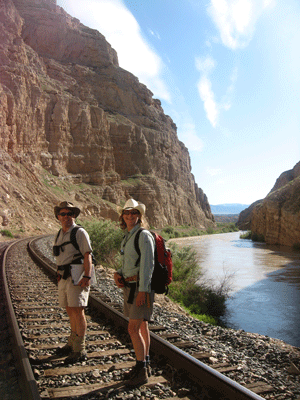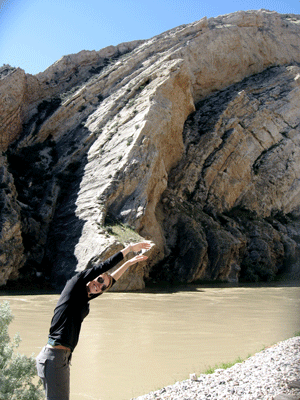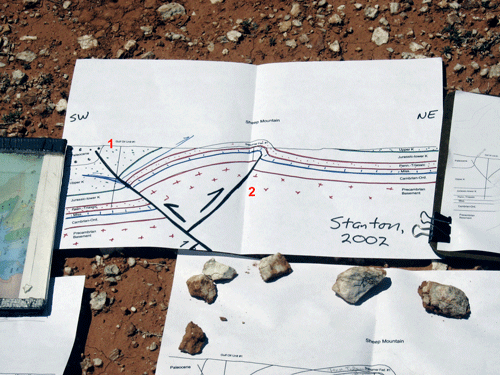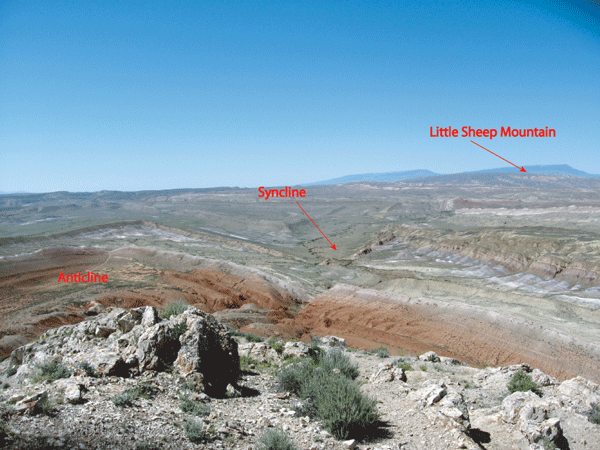6/23/09
“And be on guard, I saw five or six rattlesnakes last time I was here.”

Chris and Eric at the anticline
Not only were we walking blindly on train tracks into the canyon, now with the prospect of snakes this venture became ten times more exciting! Eric was in the lead, narrating the way through Sheep Mountain where he and his students have done research previously. One of the most well known anticlines in North America, the Sheep Mountain anticline is a structural beauty. Along the hike we identified collapsed caves, stylolites (an irregular, suture like contact produced by pressure dissolution of rock under deep burial conditions), small thrust faults (perpendicular to the anticline hinge), slicks along bedding planes and witnessed a spectacular view of the Sheep Mountain anticline. After exiting the canyon, Eric surprised us with a group activity: an exercise formerly prepared for his Exxon Mobil cronies. Pairing up with Megan, I set out to complete a geologic cross section through Sheep Mountain. After all submissions from the 4 teams were in, it was the geophysicists who reined supreme, our cross section most resembling Eric’s (Tyler coming in a close second). A rough sketch of Eric’s proposed model can be seen below.

Me at the Sheep Mountain Anticline

Proposed model for the Sheep Mountain Anticline
I was able to witness science at its best as Eric and Chris discussed alternate theories regarding the faulting under Sheep Mountain. Using the sketch as a guide, the first question discussed was which fault was the main fault and which the backthrust (#1 and #2). After Eric identified fault #1 as the main fault and fault #2 the backthrust, Megan raised the question, why would you have a new fault break through an existing fault instead of reinforcing the existing fault? Eric’s hypothesized that the gravitational load of the rising mountain changes the stress state and as such forces faulting west. Chris took a different angle suggesting that the original fault could be reactivating pre-existing structure. It was great to witness active questioning of current models firsthand!
Tearing through dirt roads in our big ole’ SUVs, we made our way to the north-plunging nose of the anticline. We walked into a gully where we could “look down- plunge,” and viewed wild folding at the apex of the Gypsum Springs Formation and identified Z, M, and S folds.

Z, M and S folds
We slowly made our way up the mountain stopping here and there looking at fracture patterns, questioning whether they were the result of local, Laramide or younger deformation. The view from the top gave us an exquisite view of the backlimb tightening zone.

Backlimb tightening zone
Our last stop of the day was Dirty Annie’s diner, Shell’s hidden gem. As a malt connoisseur, I am quite the critic but I must say Dirty Annie’s makes mean malts. A dessert coma made the perfect end to a perfect day!
